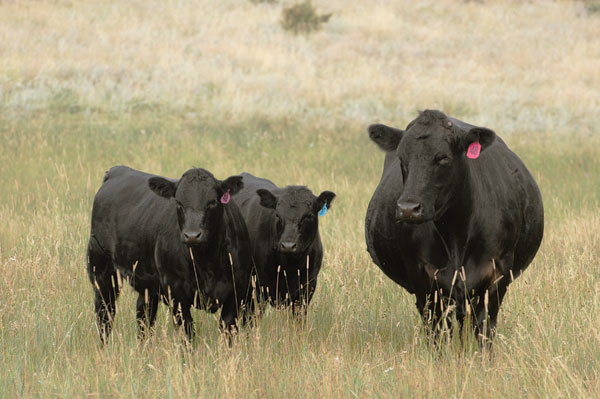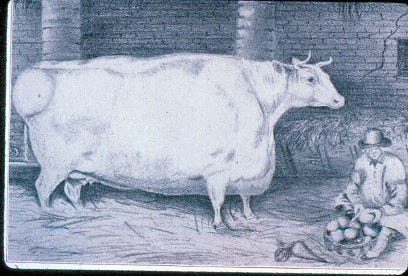What makes the perfect cow?
July 26, 2016

Every rancher has the vision of his perfect cow. Perhaps you’ve had that one great cow that you measure against all of the rest. She consistently breeds back, milks well, produces a big calf, has a sweet disposition, and her profile in the pasture is one you could stick in a frame and hang on the wall in the living room.
As weaning draws near, now is a good time to evaluate your cow herd to determine which ones are growing a solid calf, which ones are weathering the summer heat well, which ones are starting to look their age, and which ones perk their ears up a little too high when they hear the four-wheeler coming. A tentative keep-cull list before pregnancy checking is a good idea, so you can make your culling decisions based not only on date of pregnancy but on other important factors of these cows, which should work for us, not the other way around.
READ: The relationship between cow size and production
It can be hard to achieve the perfect cow, and my idea of a great one might be vastly different from the one you aim to raise. Certainly, there’s no one-size-fits-all for that dream cow, and it’s interesting to learn which priorities cattlemen rank higher than others when building that perfect cow in their minds and in their herds.
I recently read a great article written by Kathy Voth for OnPasture.com, which showcased the work of the late Harlan Ritchie, who spent his distinguished career leading the charge in beef’s transformation in composition, size and growth potential.
Titled, “From big to small to big to small: A pictorial history of how we’ve changed what cattle look like,” the article features images of cattle dating back to 1742 and the respective sizes, shapes and colors of these bovines through the generations.
Of the changing cow size over the centuries, Voth writes, “Attempts to improve cattle started in the British Isles in the mid–1700’s when farmers began recording ancestry and developing local breeds. The same occurred later on the continent of Europe. Early European cattle were used primarily for draft and milk. They were extremely large-framed, late-maturing, light-muscled and slow to finish. When they went to market at 3-5 years of age, they were very rough and patchy.
“The early British breed improvers set about to reduce frame size, hasten maturity, increase thickness of fleshing and the ability to finish at a younger age and lighter weight. This trend continued until the late 1950’s.”
READ: There is no magical cow size that guarantees profitability
Here are a few images from Ritchie’s research on this topic:
From 1742, check out the mother of the Hereford breed, “Silver.”

This sketch of a freemartin cow from the year 1806 weighed 2,800 lbs. and had a carcass weight of 1,820 lbs.

From 1886, here is a photo of an Angus cow, “Miss Pretty,” owned by Queen Victoria.

To view more photos from the history books, click here.
It's certainly interesting to look at the conformation of these early cows in our industry's history. As we dive into the 1900s, we see even more extremes — from the short and squatty to the extremely tall, lean and rangy.
READ: Which cow size is right for you?
Currently, U.S. cattle are larger in size and the resulting carcasses are bigger in size, as well. This is a case for the beef industry’s efficiency and producing more beef with fewer resources, but do you think we’ll see a swing in the other direction? Many cattle shows I’ve attended in the last couple of years are selecting extremely deep-bodied but moderate-framed females to win the shows, and trends in commercial production tend to somewhat follow the show ring (when practical and applicable anyway), so maybe we’ll see a smaller cow in the future.
What do you think? What does your perfect cow look like? What do you think about the current size of the average U.S. brood cow, and do you think sizes will moderate in the upcoming years? Share your thoughts in the comments section below.
The opinions of Amanda Radke are not necessarily those of beefmagazine.com or Penton Agriculture.
You might also like:
4 facts to debunk "Meat is horrible" article
60 stunning photos that showcase ranch work ethics
Best risk strategy options for cattle producers
Does it really take six years to cover your costs on a cow? NO!
Photo Gallery: Get to know the 2016 Seedstock 100 operations
You May Also Like


.png?width=300&auto=webp&quality=80&disable=upscale)
